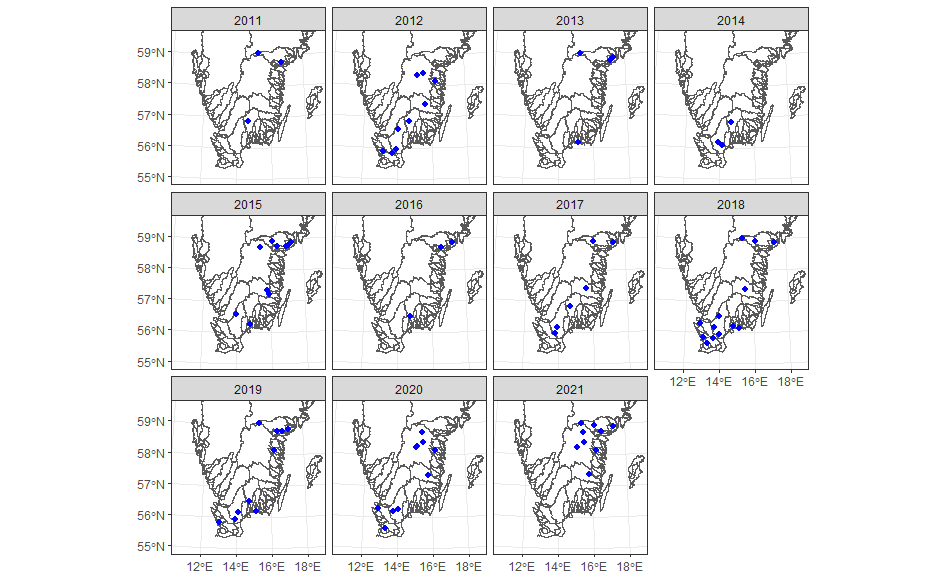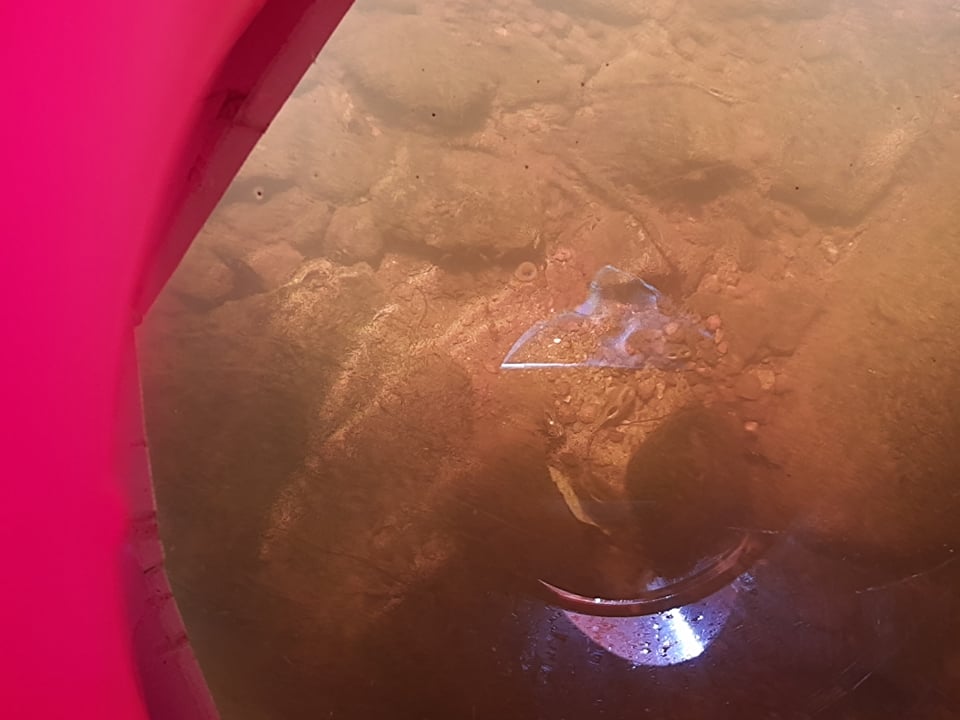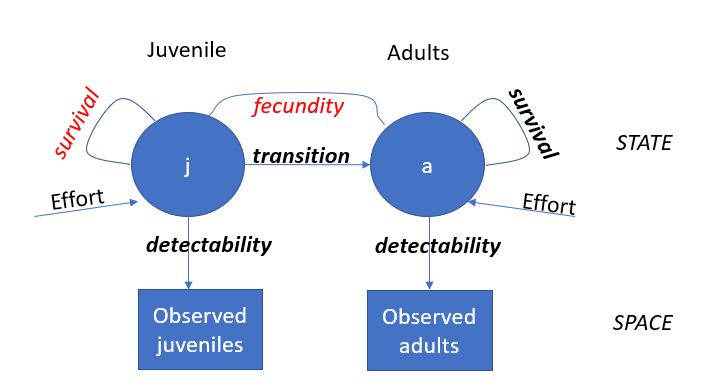Study sites
Data were collected from SLU using monitoring data from 19 populations between 2011 and 2020 which had measured length of individuals. Then during 2021 I inventoried 9 of the 19 populations. During own inventories in 2021 I collected shells of high quality to measure yearly growth.

Thin section resection
Investigation of abiotic factors effect on yearly growth was done by using collected shells and creating thin sections and measuring the distance between winter rings.

Abiotic factors investiagted where:
- Temperature
- Phosphorous
- Inorganic nitrogen
- Sedimentation concentration
Detection
Detection of juveniles was estimated using data from 17 inventories and a binomial mixture model and predicting the chance of finding 1 juvenile mussel. Environmental conditions used were, proportion of water course shade, size of search area, water level and whether water was clear or turbid as observation-level covariates. With the prediction, environmental factors values was classed into three categories for detection, unfavourable, favourable and intermediate.

Juvenile vital rates estimation
Using data from SLU and revisited sites, a state-space model was created to estimate annual juvenile survival in Sweden, mean fecundity and population size of adults and juveniles. The model used an fixed value for mean adult survival, percent juveniles that transition to adults each year, and detection of adult and juveniles.
